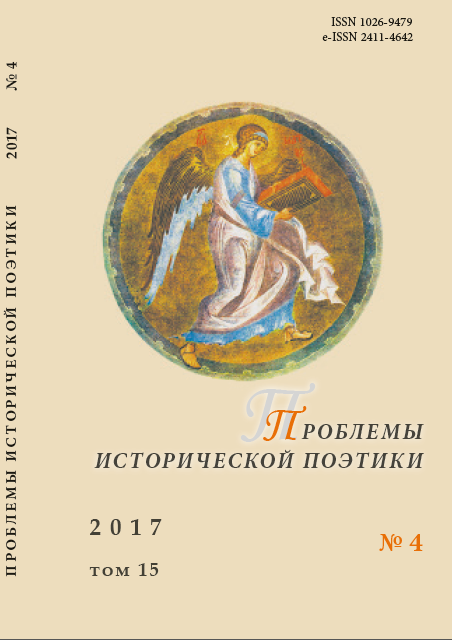О функциях и символике снов в повести Е. Домбровской «Весна души. Страницы жизни рабы Божией Анны»
Functions and symbolism of dreams in E. Dombrovskaya’s story “The spring of soul. Life scenes of Ann, the servant of God”
Author(s): Natal’ya V. PrashсherukSubject(s): Christian Theology and Religion, Russian Literature, Theory of Literature
Published by: Петрозаводский государственный университет
Keywords: spiritual prose; patristic tradition; orthodox ascetics; spiritual way; dreams; visions; Christian symbols; epiphany;
Summary/Abstract: The article offers the analysis of functions and symbols in one of the writings of modern spiritual prose, the story “The spring of soul. Life scenes of Ann, the servant of God” by E. Dombrovskaya. Based upon the Orthodox traditions the author gradually follows a criterium that separates spiritual and clerical aspects of a Christian’s life, reveals the experience of step-by-step “heart purification”. The dreams interpreted by the author within the patristic learning play a role of a descriptive and symbolic analog of the character’s spiritual experience. The dreams are revelation on the implication of bygones. These dreams are systematized, unified by a cross-cutting topic of the orthodox Christian’s way of life and are meaningfully and structurally included in Ann’s ascetic experience, her stepwise way of attainment of humility and “spiritual gifts”. The author avoids “deviations” towards the aspects of human soulfulness. The dreams partly show character`s psychological wellbeing. They become the signs of God’s will, related to destinies of Orthodoxy in Russia. All the dreams are filled with Christian symbols such as the cross, Jacob’s ladder, communion cup and the cup of affliction, church, icons, icon frameworks, images of the Saviour and Holy Virgin, Saint Sergius of Radonezh and Saint Prince Vladimir. The key meaning belongs to theme images of cross, heart and spilled blood. They are seen as the principal reference points on a Christian’s way and as a guarantee, an antidote against “pharisaical mind”. Dreams as the harbingers of the “unseen world” are closely connected with an epiphanical principle in depicting.
Journal: Проблемы исторической поэтики
- Issue Year: 15/2017
- Issue No: 4
- Page Range: 135-148
- Page Count: 14
- Language: Russian

